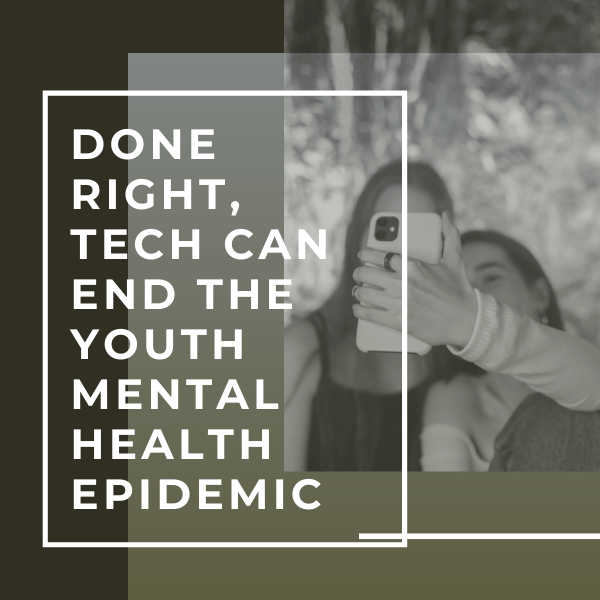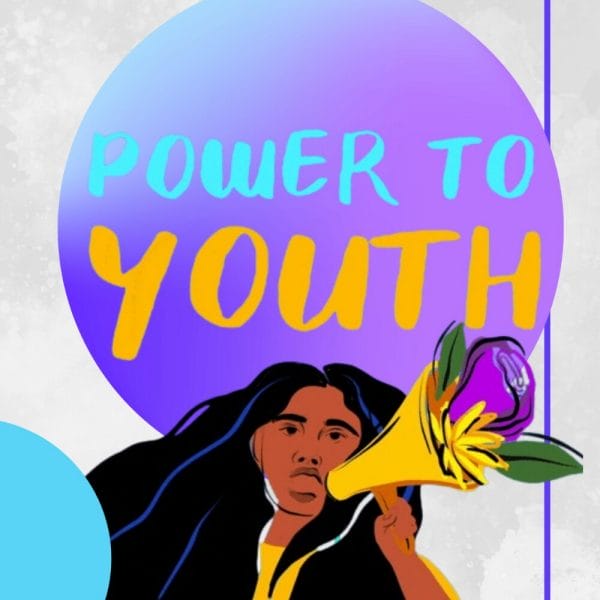Opinion: We need to reframe the conversation around technology and mental health into one of increased connection and potential for solutions.
This article was written by Margaret Laws, Hopelab President and CEO and Danielle Ramo, Ph.D., Hopelab’s former Senior Director of Research
“Technology is ruining this generation.” We’ve all heard it: the singular flattening of the digital universe—social media, texting, online schooling, apps and more—into a monolith bringing down our young people.
If only things were that black and white.
There are certainly reasons to worry. Our teens and young adults are facing mental health challenges like never before. The last year has taken young people from an already looming mental health crisis pre-pandemic to a place of unprecedented precarity. A recent study from the University of Calgary reports that rates of depression and anxiety in children and adolescents worldwide have doubled over the course of the pandemic. In 2020, the proportion of emergency psychiatric visits among 12- to 17-year-olds increased 31% from the year prior.
Social media and other big tech have contributed to increasing rates of depression, anxiety, suicidality, and self-harm. Documentaries like “The Social Dilemma” even present evidence that tech preys on addictive tendencies, keeping users hooked while profiting from advertising that exploits teens in particular.
While it’s easy to suggest that the solution is to just keep kids off screens, this isn’t realistic, nor does it acknowledge the profound opportunity that lies in using technology as a force for social connection, supporting neural pathways that promote mental health resilience. What could happen if we reimagine what tech looks like and the roles it plays in our lives? If we wanted to design emerging technologies that instead work for our young people’s mental health using the science of well-being, where would we begin?
Draw From Social Connection Science

Tech intentionally designed to bring people together can help mend lost connections. Social isolation takes the greatest toll on the brain and behavior during adolescence, and connecting through social tech may buffer against feelings of isolation, even when apart. Thanks to widespread access to digital platforms, the pandemic-related decrease in adolescent face-to-face contact is likely to be less detrimental than it might have been without.
More than 97% of U.S. teens ages 13-17 have a social media profile. And teens say they are benefitting: 81% report feeling more connected to their friends and 68% say social lets them access support. Hopelab and Common Sense Media’s research reveals that during the pandemic, more than half (53%) of young people rate social media as “very” important for staying connected. In fact, it’s been shown that online connection can mirror core qualities of good offline friendships (e.g., self-disclosure, validation, companionship, instrumental support, and conflict resolution).
Tech can also boost self-esteem and altruism by allowing young people to explore their sense of purpose—whether it be to share a talent, help peers who are suffering, or organize around righting injustices to drive social and political action. And for some teens, after this much time apart, easing back into an in-person world will be better supported through engaging with tech.
During development, prioritize tech equity and co-creation

Digital can help, when it’s done right. We need to validate the medium and encourage teens to make healthy connections online; we do this by supporting creativity in digital spaces, promoting meaningful online connections with peers, and normalizing outreach for support from trusted resources.
The digital landscape offers a safe haven for teens who may not have one elsewhere. While broader social media is still riddled with cyberbullying for teens of color and LGBTQ+ teens, many young people look to niche online spaces to escape from stigma and violence into a sense of belonging, community, and hope. Virtual spaces can foster identity-building, social support, exploration, and individuation. Digital tools like CenterLink’s Qchat space and Trevor Project’s TrevorSpace provide affirming communities for LGBTQ+ young people in times of crisis. And young people are taking note: in the past year alone, the Trevor Project’s Digital Crisis Services received 66,000+ crisis contacts.
To get there, community co-design is key. The intended audience should be involved from the start and acknowledged as contributors throughout the process. By doing so within the development of mental health tech for young people, we’re fostering autonomy and destigmatizing broader mental health conversations.
Invest in tech for good over the long-term

The pandemic brought broad recognition among the investment community that access to mental health support and services is lacking, and that tech can be part of the solution. 2020 was a record year for VC investment in mental health tech startups, with 146 deals worth nearly $1.6 billion—the first half of 2021 has already reported more than $1.8 billion. Yet, we still have work to do—few of these newly-funded companies provide services directly to teens and young people.
We’re already seeing the promising beginnings of an investing sea change. To spotlight just a few: Melinda French Gates’s company Pivotal Ventures supports teen mental health through Headstream, which is creating a collaborative network of teen advisors and experts to help use “what’s great about tech to make it even better.” Pivotal also supports the Upswing Fund for Adolescent Mental Health which provides resources to non-profits focused on mental health for adolescents of color and LGBTQ+ youth, and Telosity, an impact investment fund. The Morgan Stanley Alliance for Children’s Mental Health provides resources and thought leadership to expand the ecosystem of funders and innovators rising to the challenge. And, recently, Hopelab announced Hopelab Ventures, a social impact investment initiative designed to support companies innovating through tech in teen/young adult mental health.
As we emerge from the pandemic, can we put an end to the “tech is bad for young people” critique? We know enough about how technology and digital spaces can promote connection, inclusion, and equity of access, but it’s going to take vigilant attention and hard work to ensure they do. From here, let’s support and co-create with our young people, who will drive the next generation of social tech by redefining mental well-being and building novel approaches to support and care.





